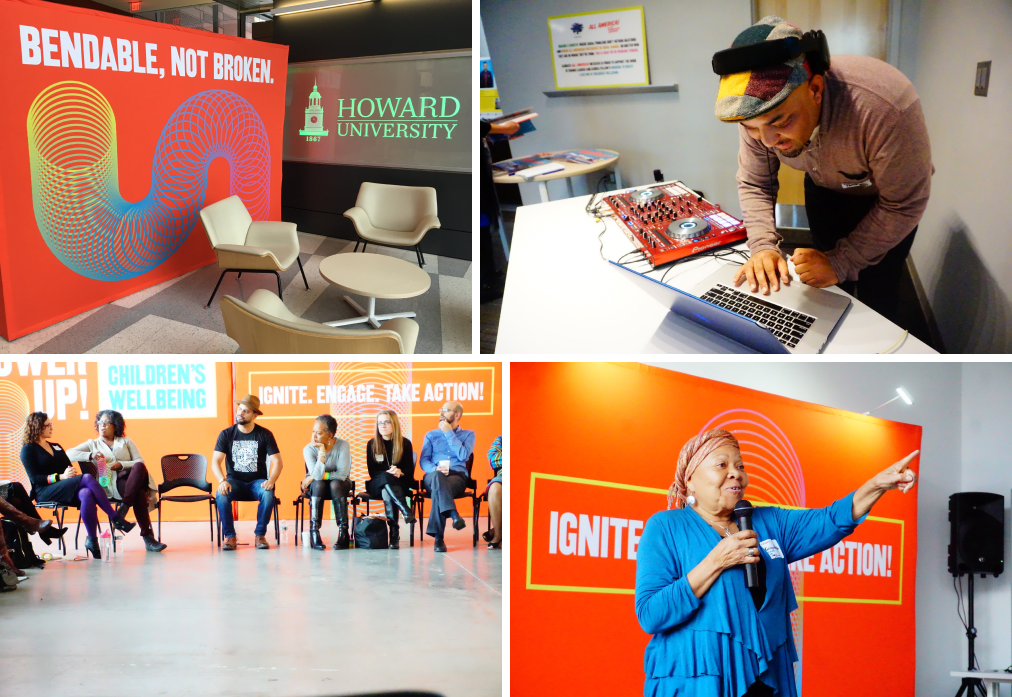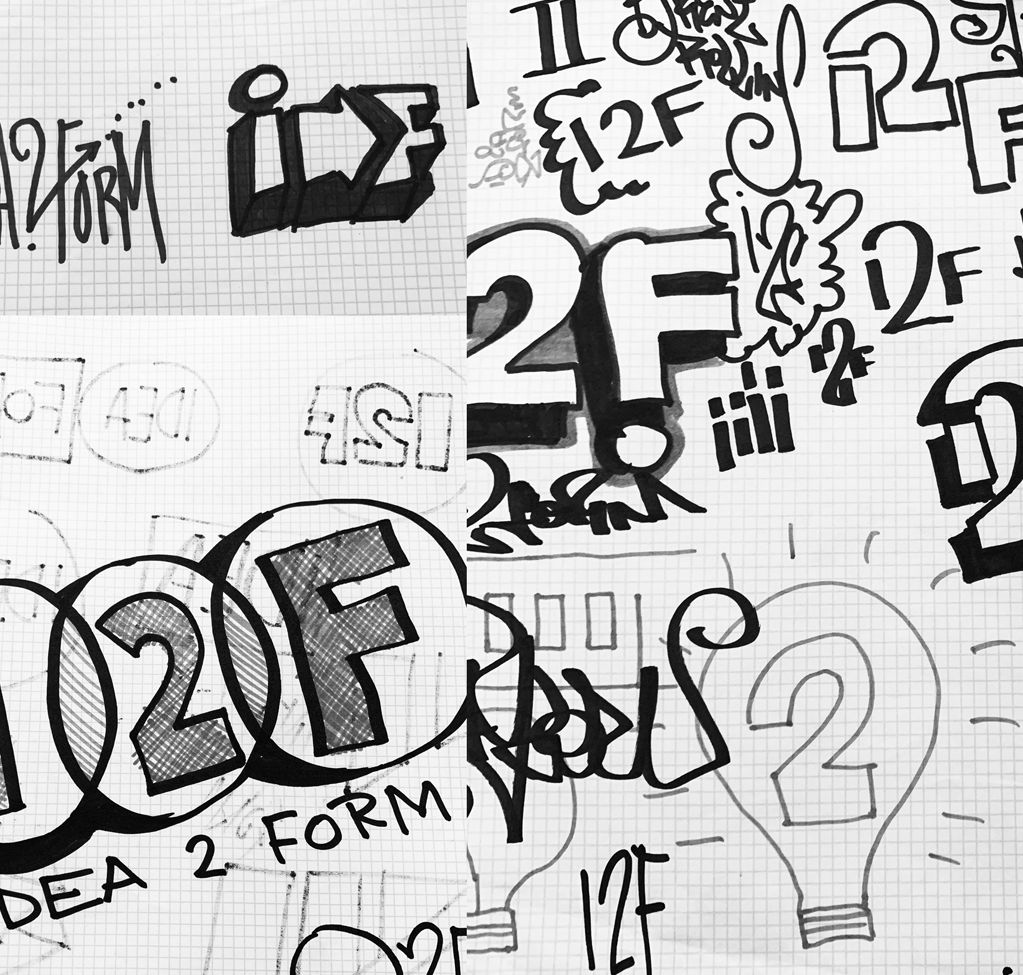Idea2Form formally launched in 2018 as a BIPOC (Black, Indigenous, and People of Color) led creative studio dedicated to social impact work. At the time, most creative agencies didn’t engage in social change work and, if they did, approached it from a traditional marketing perspective. In recent years, people and organizations of all kinds have joined efforts to solve systemic inequalities and bring about change — work requires deep commitment, an understanding of the issues and root causes, and working collaboratively to achieve widespread impact.
Idea2Form’s mission is to design solutions that connect, activate, and inspire people towards building a more equitable world.
We aim to achieve our purpose through our unique approach to design we call Multi-Dimensional Design (MDD), which allows us to create design solutions that are integrated, holistic, and sustainable. We love advancing the mission of causes we believe in and have been doing so for decades.
Idea2Form’s origins are rooted in a fellowship that spans 25 years with its founders, Alexandra “Lexx” Valdez and Tomas Alvarez III — a friendship and collaboration defined by a lifelong dedication to social justice, healing, and community.

Photo: Lexx and Tomas at the opening of BRLHQ, 2015.
Tomas (he/him/el) and Lexx (she/her/ella) met in 1996 on the Central Coast of California while co-organizing youth conferences and initiatives through Cal Poly San Luis Obispo M.E.Ch.A. (Movimiento Estudiantil Chicano de Aztlán), which sought to empower Latinx youth and foster cultural pride. Members of the group also planned weekend field trips that enabled local Latinx youth to reconnect with their Indigenous roots and learn about sacred ceremonies from native elders.
By 1999, Lexx and Tomas had lost contact, but their paths crossed again in 2005 in San Francisco. At the time, Lexx was enrolled at the Academy of Art, School of Graphic Design and working at several youth organizations such as Health Initiatives for Youth (HIFY). She was also working as a freelance graphic designer at the School of Unity and Liberation (SOUL), where she was taking courses to develop her movement-building skills. Tomas was in his second year of graduate school at the Smith College School for Social Work, where he was developing an innovative approach to therapy that used Hip Hop expression to help young men of color heal, grow and lead. That summer, Tomas asked Lexx to design a presentation deck for his master’s thesis on his Hip Hop Therapy program called Beats, Rhymes, and Life (BRL). After graduating from Smith, Tomas evolved the program into a nonprofit organization in Oakland, California, serving as its founding executive director until 2015.
Video: Bank of the West 2013 Innovation in Philantrophy Awardee: Beats Rhymes and Life.
In 2008, Lexx joined BRL as its creative director and co-led its creative team alongside Tomas. The team would grow to include: content producer Halline Overby, digital artist Aries Nunez, communications strategist Tamara Orozco, and a crew of local creatives, photographers, and videographers who helped capture and share the organization’s impact. One day in 2011, this crew of creatives picked a team name that spoke to their creative purpose: Idea2Form (I2F). Together, the team produced creative assets like the video below:
Video: Reimagine PSA Video from Beats Rhymes and Life, 2013.
The organization grew to become a recognized leader in adolescent mental health. Tomas was named a top 20 Latino innovator in 2012 by NBC and a CNN hero in 2015, resulting in BRL receiving international praise and recognition. Tomas was also named an Ashoka Fellow in 2014, a lifetime fellowship of 4,000 leading social entrepreneurs spread throughout 92 countries working to solve deep-rooted social problems. The Ashoka Fellowship introduced Tomas to the nuances of systems thinking and a global community of change leaders.
By 2015 both Tomas and Lexx had transitioned out of BRL to pursue other endeavors that could help expand their learning and practice to have a more significant impact.
–
Lexx joined a boutique creative agency in Los Angeles doing design work for groups like the California Endowment and The Women’s March. During this time, Lexx also began to notice disturbing trends in the design space:
- Many interactions between creative agencies and organizations were transactional, not relational-oriented.
- Many creative agencies adopted colonial mindsets that were both extractive and exploitative towards creative contributors, especially for independent contractors and marginalized employees.
- Despite significant demand for their unique contributions, there was an implicit de-valuing of BIPOC talent and networks on high-profile projects.
These trends left Lexx feeling disheartened in the design sector and yearning for a change.
–
After transitioning from BRL, Tomas started a fellowship at Stanford University through the Haas Center for Public Service, co-teaching courses on Social Entrepreneurship and Ethics and Politics of Public Service. Tomas also embarked on independent research focused on how mission-driven organizations create widespread change during this time. The exploration led him to Stanford‘s renowned d.School. The d.School introduced Tomas to the concepts of design thinking and human-centered design. Tomas found these concepts helpful for aspiring changemakers conducting iterative design. Still, he felt the concepts (largely defined and popularized by non-BIPOC academics) viewed change-making from a top-down approach (e.g., designing solutions for communities rather than designing/advancing solutions by and with the community). Throughout his research and frontline experience, Tomas saw recurring themes around social impact work:
- Intention does not equal impact — Despite good intentions, many initiatives designed to create positive impact perpetuated harm in marginalized communities by upholding oppressive power dynamics and colonial constructs.
- Tokenism, gatekeeping, and gaslighting undermine BIPOC communities — The communities most impacted by social and environmental problems are not permitted to lead change or drive their solutions, especially without adequate validation or sponsorship from outside “experts” or institutional actors. Often, these same communities are invited to participate in stakeholder processes but are not granted decision-making power or control over resources.
- Social sector leadership is not reflective of communities being served — Leaders of color are vastly underrepresented, under-resourced, and untapped in the social sector despite an abundance of suitable candidates.
- Dominant narratives about beneficiaries reinforce negative stereotypes — By and large, storytelling in the social sector reinforces problematic, deficit-based narratives that robbed communities of color of their strength and dignity and depict them as only recipients of charity or care.
For Tomas, these themes fueled a hidden passion for transforming how individuals and groups approach social impact work.
In 2017, Tomas and Lexx rejoined forces to support the Children’s Wellbeing Initiative (CWI), a joint initiative between Ashoka and the Robert Wood Johnson Foundation that sought to explore ways to create a culture of wellbeing that enabled all children to grow up with a positive sense of self, belonging and purpose. CWI engaged a network of leading organizations working to improve outcomes for children, youth and families, to come together to develop a unifying framework and platform. Over 200 groups from 22 states participated in the initiative which lasted three years.

Photos: POWER UP: Children’s Wellbeing Summit held at Howard University in Washington, D.C., 2017.
In November 2017, Lexx and Tomas helped convene over 100 change leaders at the first-ever POWER UP: Children’s Wellbeing Summit held at Howard University in Washington, D.C.
Video: POWER UP: Children’s Wellbeing Summit held at Howard University in Washington D.C., 2017.
The summit inspired Lexx and Tomas to consider how they might leverage their combined years of 40 years of social impact experience and vast creative networks to make bold causes like CWI easy to connect with and impossible to ignore. In 2018 they decided to launch Idea2Form. One of their first goals was to create a new design philosophy that reflected their shared values, unique mindsets, and emergent practice.






